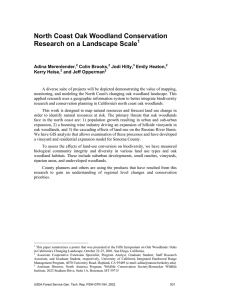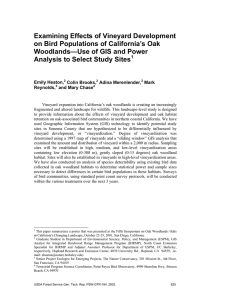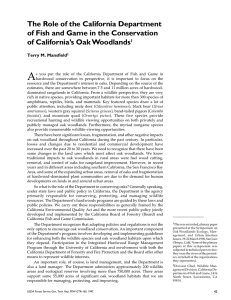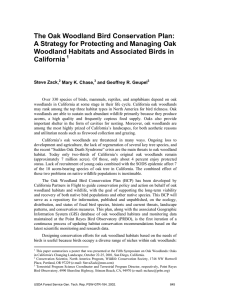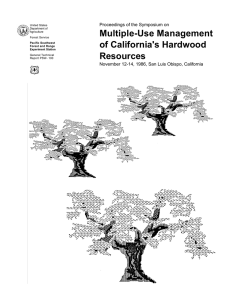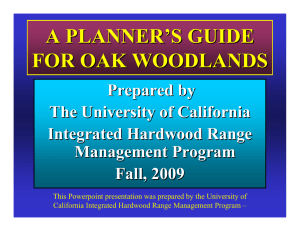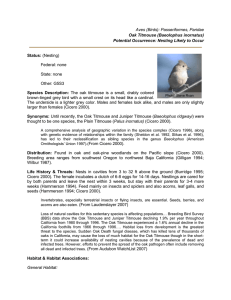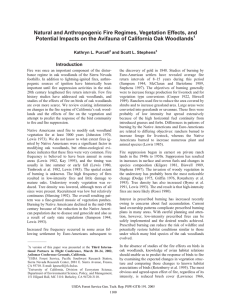VIII ECONOMICS, POLICY, AND PLANNING
advertisement
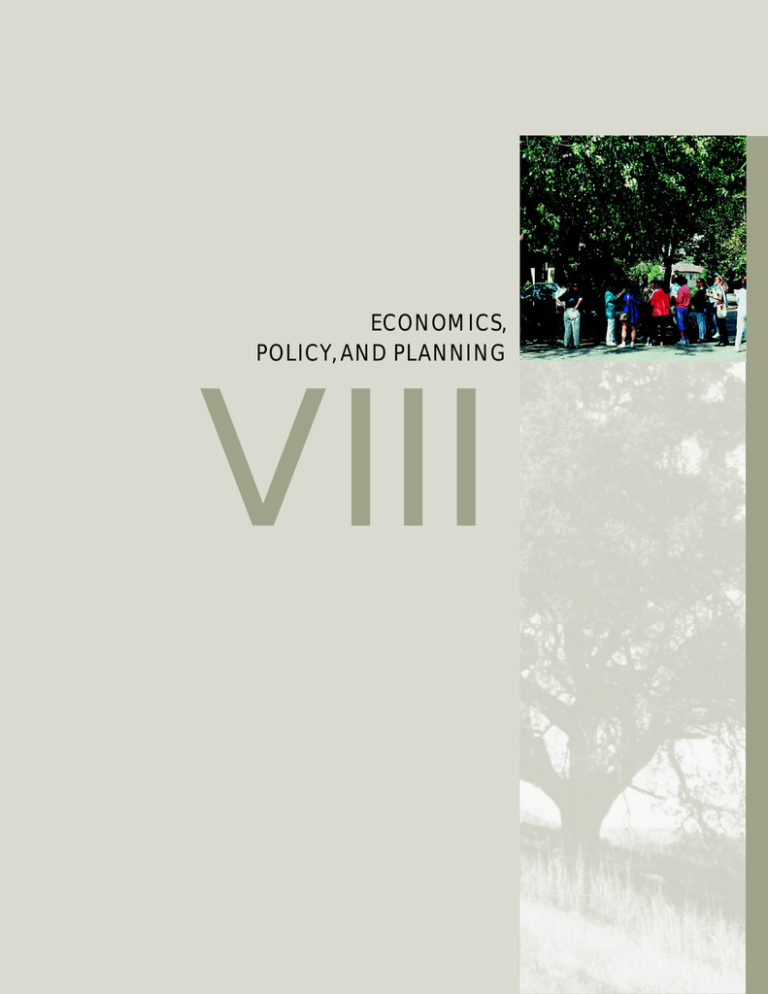
ECONOMICS, POLICY, AND PLANNING VIII Section Overview Economics, Policy, and Planning1 Richard P. Thompson2 T hroughout the symposium it seemed that whenever the toughest problems were mentioned, people and their growing impact on the oak woodland ecosystem were at the source. This refrain was heard from nearly every keynote speaker, many of whom claimed that the oak woodlands were currently under the greatest pressure from urbanization. The needs and demands of landowners, stakeholders, and society-at-large were the topic of the Economics, Policy, and Planning technical session. Even though a wide variety of papers was presented, each one presented a different perspective on the key questions. What is a sustainable state? What values are at stake? Why are land use patterns changing so rapidly? What policies are we employing today, and are they effective? How do we develop sustainable policies? How do we mitigate impacts from the ever-increasing encroachment into the oak woodlands? Of course, we do not have ready answers to these questions today, but the following papers serve to give direction in looking for the answers. To address the question on what is the current policy approach to oak woodlands management, Dr. Richard Standiford provided an overview of the Integrated Hardwood Range Management Program. This program is a partnership between University of California Cooperative Extension, California Department of Forestry and Fire Protection, and California Department of Fish and Game to conduct research, education, and monitoring in order to assist counties in establishing policies for the hardwood rangeland resources, the initial approach preferred by the Board of Forestry rather than regulation of those resources, as is similarly done for commercial timberlands. Marcus Rawlings presented a case study on mitigation strategies for reservoir development. The important issues of potential net habitat displacement and the permanence of the mitigation/conservation easements were discussed in dialog with the audience. It is through such dialog and exchange between various stakeholders that progress toward sustainable policies is realized. This was the subject of Beth Greenwood’s paper in which she presented the results of a facilitated, collaborative approach to designing sustainable management strategies—the Central Coast Sustainable Landscapes Project. The focus of the next paper, presented by Sharon Johnson, was on the key stakeholder in the hardwood rangelands—the landowner. Hardwood rangeland owners are under extreme financial pressure to maintain their property as an oak woodland because of the low rates of return from grazing while facing rapidly rising land values for development uses. Attempts to keep the property intact and in the family are severely constrained by inheritance tax law. Ways must be identified to help landowners realize tangible benefits for maintaining the property as an oak woodland. Conservation rents or tradable habitat permits are being discussed as a means of meeting this need. The paper by Jay Noel raised some even more basic questions such as: if efficient oak woodland management policies are to be designed, what desired future condition is being sought or, at least, what are the socially and economically acceptable courses to that future state? The means are available to USDA Forest Service Gen. Tech. Rep. PSW-GTR-160. 1997. 1 Presented at the Symposium on Oak Woodlands: Ecology, Management, and Urban Interface Issues, March 19–22, 1996, San Luis Obispo, Calif. 2 Professor, Natural Resources Management Department, California Polytechnic State University, San Luis Obispo, CA 93407 567 Thompson Economics, Policy, and Planning model this policy process if we can quantify the current stocks (inventories of various oak woodland resources) and the bioeconomic system relationships (ecological functions, habitat responses to land use changes, etc.). The last paper presented information that can be useful in assisting landowners in maintaining or restoring oak woodlands as one possible answer to the problems raised by Sharon Johnson. Joss Hanna described the results of a study conducted in the Lake Tahoe Basin which demonstrated quantifiable property value gains to managing trees on small acreages. The model and methodology used in this study offer a much broader applicability to other forest types including the oak woodlands which are experiencing perhaps the greatest impact from urbanization. 568 USDA Forest Service Gen. Tech. Rep. PSW-GTR-160. 1997.
